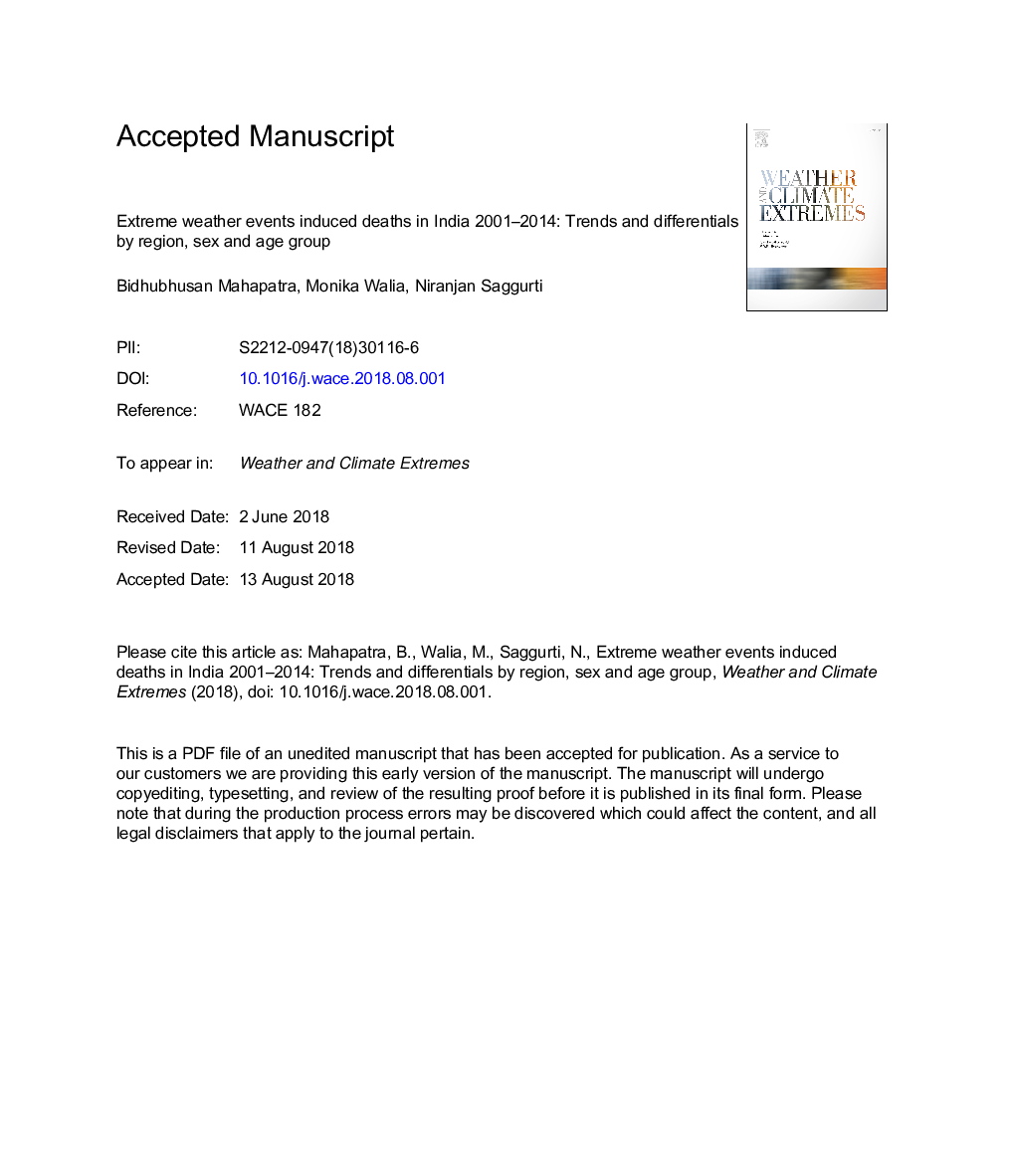| Article ID | Journal | Published Year | Pages | File Type |
|---|---|---|---|---|
| 8960945 | Weather and Climate Extremes | 2018 | 35 Pages |
Abstract
This study examined the trend in extreme weather event related mortality reported in India during 2001-14 and explored the regional, age and sex differentials in such fatalities. We used age and sex-segregated data on the number of accidental deaths by natural causes released by Government of India under the National Data Sharing and Accessibility Policy. Various extreme weather events were grouped into five broad categories: cold wave, extreme precipitation, heat wave, lightning, and tropical cyclone. During 2001-14, 25% of all accidental deaths due to natural causes happened as a result of extreme weather events. Deaths due to extreme precipitation and tropical cyclones declined over time, whereas increasing trend was observed for lightning, and extreme temperature conditions. Most of the extreme weather event induced deaths were due to lightning, followed by extreme precipitation and temperature extremes. The burden of death was highest in the central part of India. States of Andhra Pradesh, Bihar, Uttar Pradesh, Maharashtra and West Bengal were affected the most by extreme weather events. More males and older population died than their counterparts. Findings suggest that people are adaptive to some extreme weather events such as cold wave and cyclones; whereas adaptation and coping with the heat wave and extreme precipitation seems to be less. Building awareness on the adaptive mechanisms to different extremes and a community-centered alert system can help in reducing fatalities due to extreme weather events.
Related Topics
Physical Sciences and Engineering
Earth and Planetary Sciences
Atmospheric Science
Authors
Bidhubhusan Mahapatra, Monika Walia, Niranjan Saggurti,
